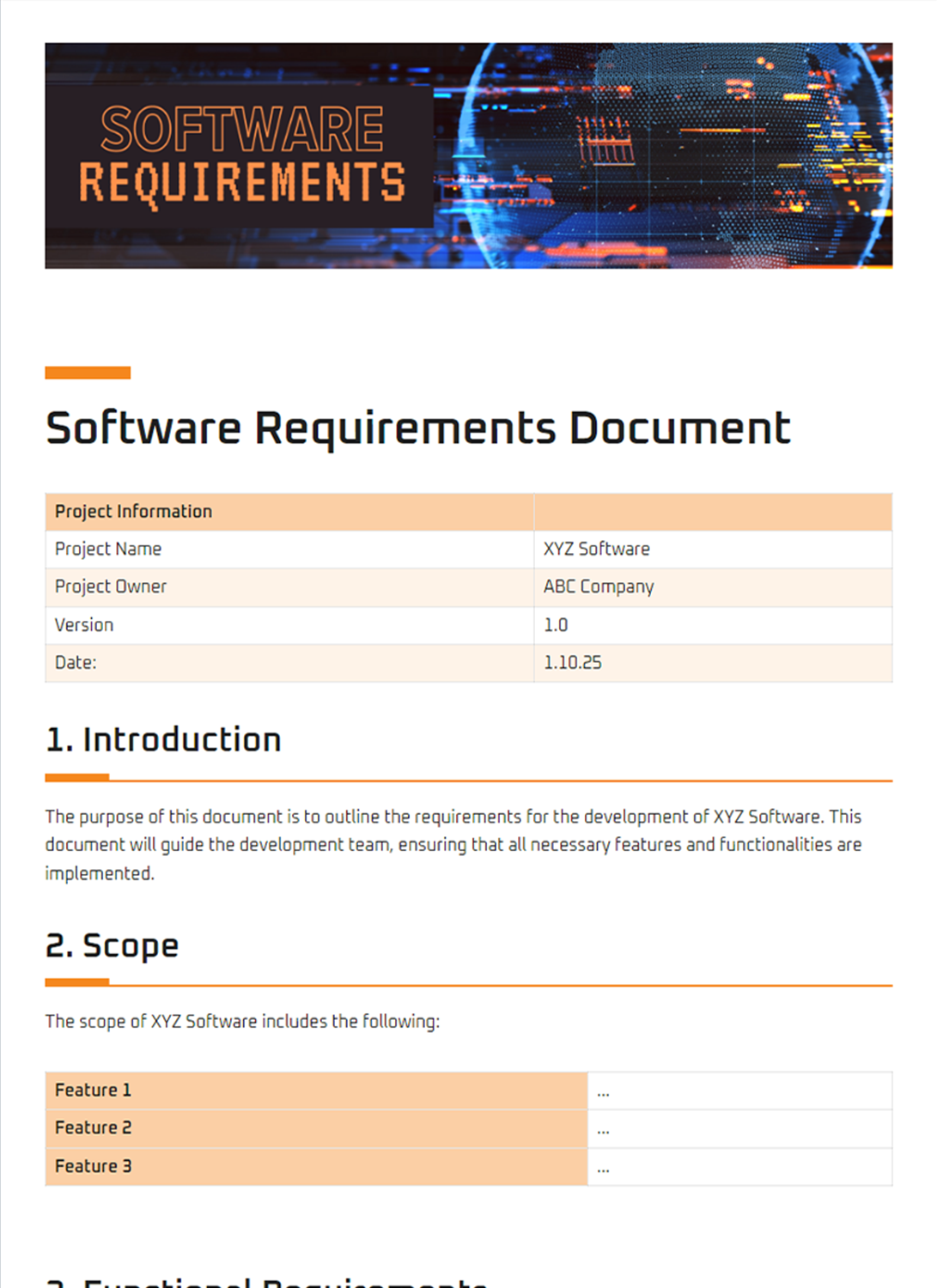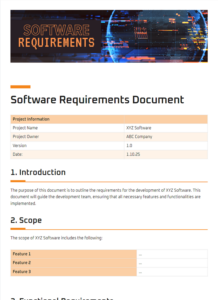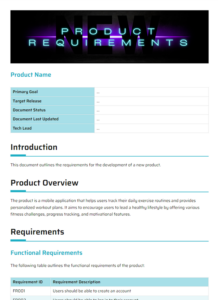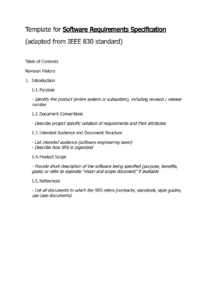Embarking on a software development project often requires meticulous planning and thorough documentation. A well-defined application development requirements template can serve as a valuable tool in this process, ensuring that all stakeholders are aligned on project scope, objectives, and expectations.
An application development requirements template provides a structured framework for capturing essential project information. It helps streamline the requirements gathering process, facilitating effective communication between development teams, clients, and end-users. By utilizing a template, organizations can ensure that critical details are not overlooked, reducing the likelihood of costly rework or misalignment in the final product.

Importance of a Well-Structured Requirements Template
A well-structured requirements template offers numerous benefits throughout the software development lifecycle. Firstly, it establishes a clear and concise foundation for the project, ensuring that all stakeholders have a comprehensive understanding of the project’s goals and objectives. Secondly, it serves as a central repository for project information, minimizing the risk of miscommunication or misunderstandings. By maintaining a centralized document, all project-related requirements, specifications, and constraints can be easily accessed and referenced by team members.
Furthermore, an application development requirements template facilitates collaboration and knowledge sharing among team members. It provides a standardized format for documenting and communicating requirements, promoting a cohesive understanding of the project deliverables. Additionally, by capturing requirements in a structured manner, teams can identify and address potential risks or conflicts early on, enabling proactive problem-solving and mitigating project delays or setbacks.
Essential Components of a Comprehensive Requirements Template
The specific components of an application development requirements template may vary depending on the project’s nature and scope. However, some key elements commonly included are:
- Project Overview: This section provides a general introduction to the project, including its purpose, background, and key stakeholders.
- Functional Requirements: These requirements define the specific tasks and functionalities that the application must perform.
- Non-Functional Requirements: This category encompasses requirements related to the system’s performance, usability, security, and reliability.
- Acceptance Criteria: This section outlines the criteria that the application must meet to be considered acceptable for release.
- Glossary: A glossary defines any technical terms or acronyms used throughout the requirements document.
By ensuring that these essential components are addressed, project teams can create a comprehensive and effective application development requirements template that serves as a valuable asset throughout the software development process.
Conclusion
An application development requirements template is an indispensable tool that can significantly enhance the success of software development projects. By providing a structured framework for capturing and organizing requirements, it fosters effective communication, minimizes misunderstandings, and ensures that all stakeholders are aligned on project objectives. Ultimately, a well-crafted requirements template contributes to a streamlined and efficient development process, reducing the likelihood of costly rework and ensuring the delivery of a high-quality, user-centric application.
Remember, investing time and effort in developing a comprehensive application development requirements template is an invaluable investment that will pay dividends throughout the project lifecycle, leading to successful software development outcomes.



